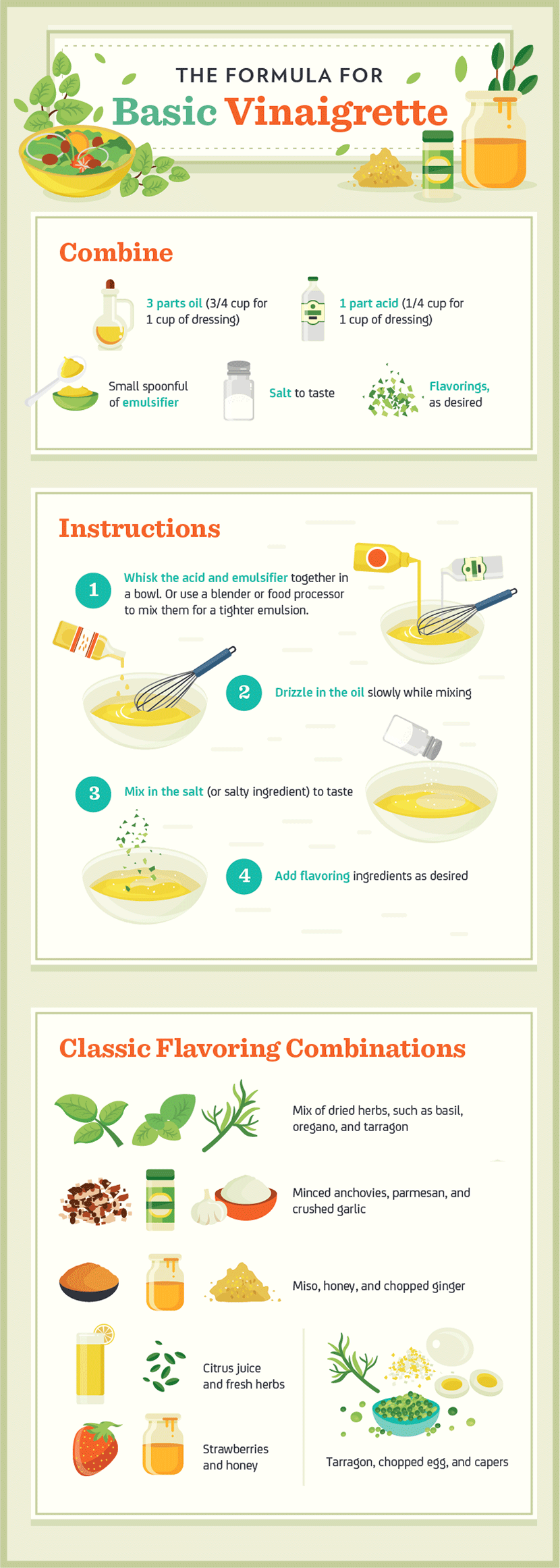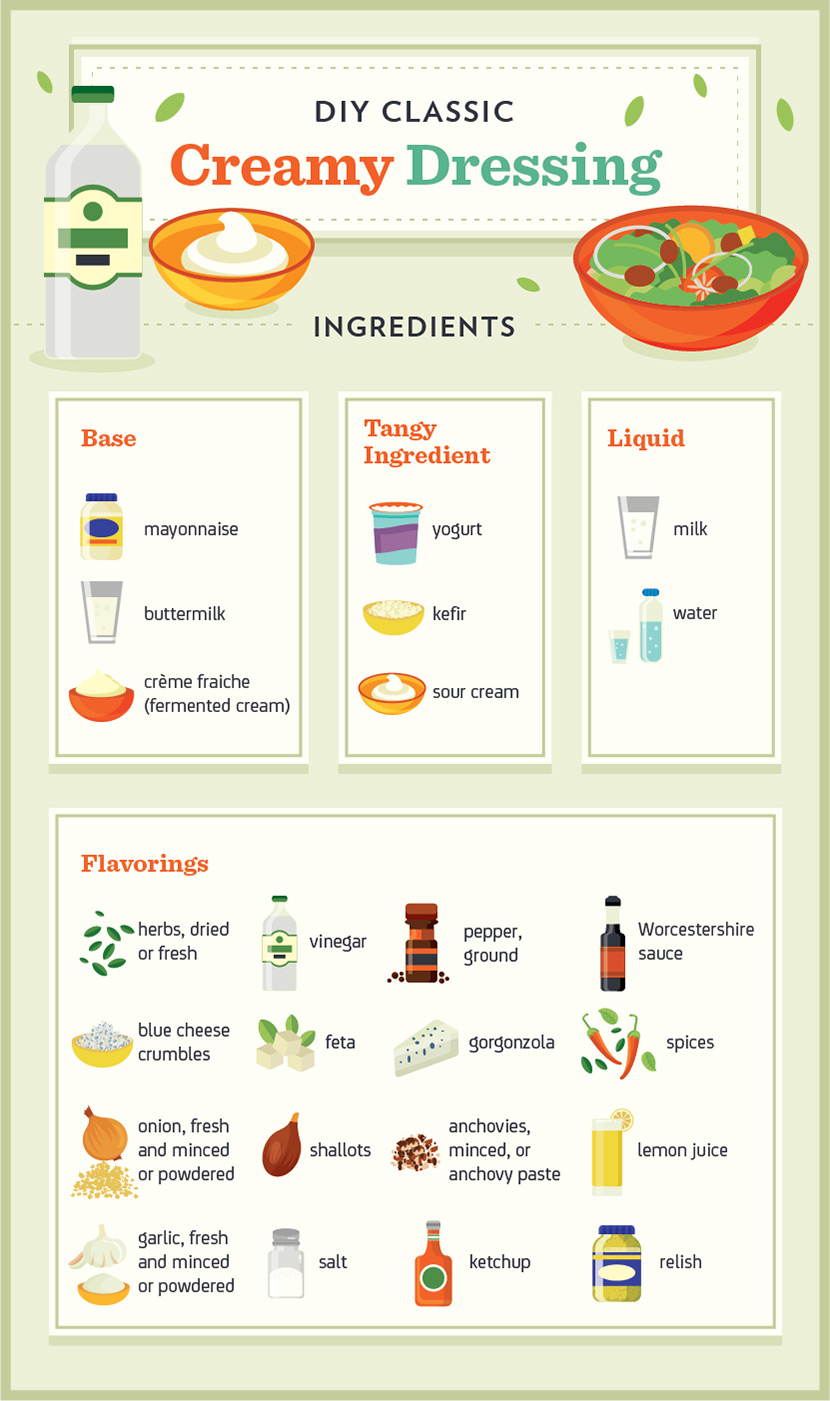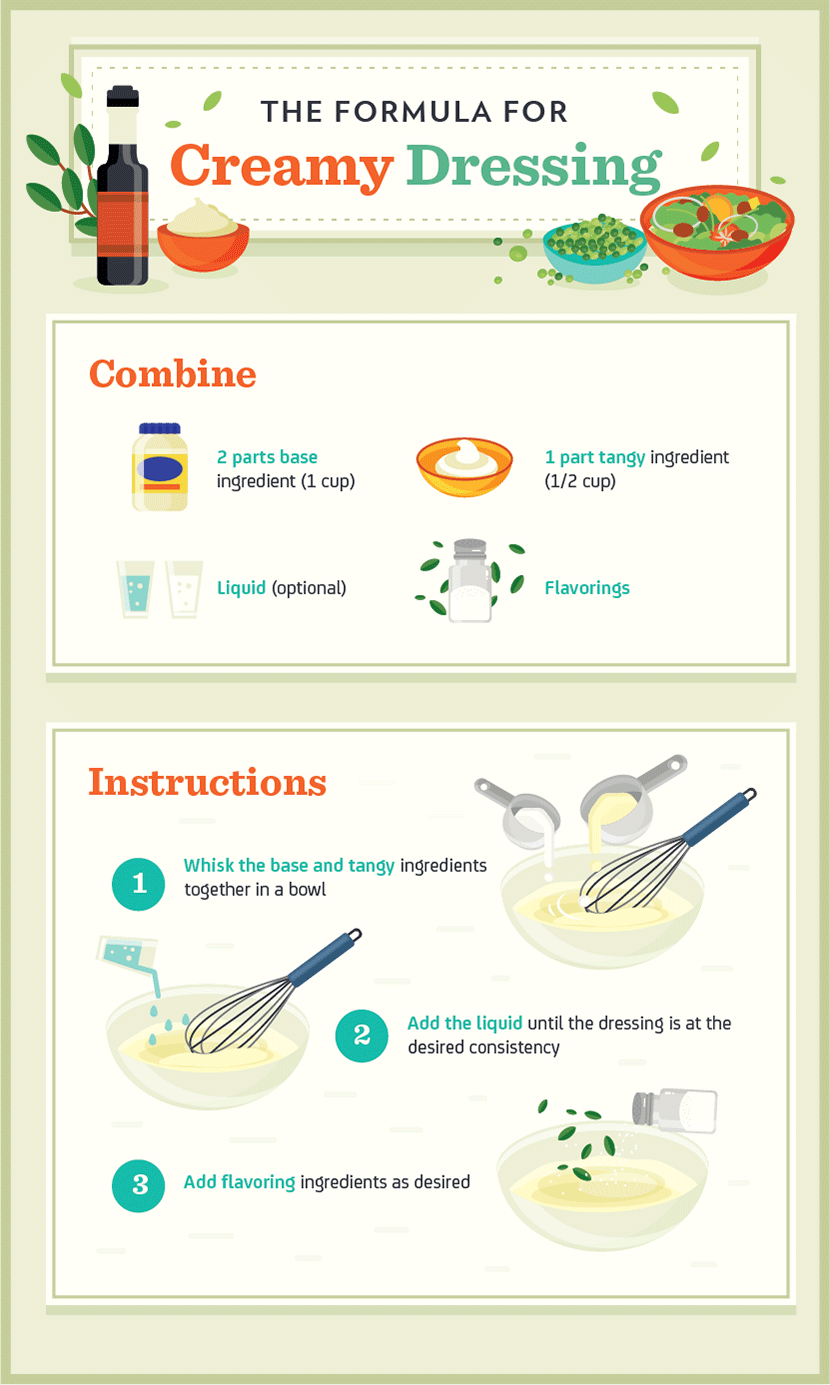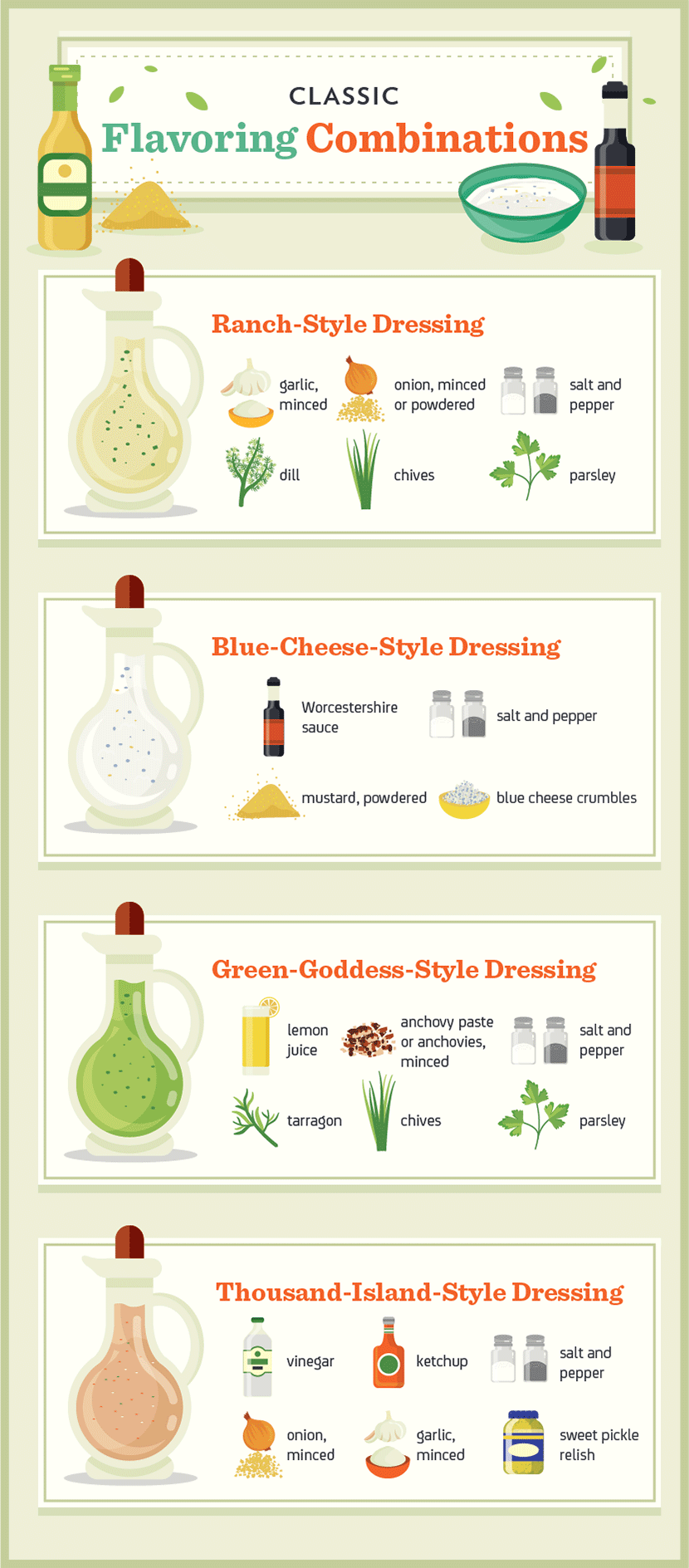DIY Salad Dressing: What You Need to Know About Oils and Additives
Fat is where it’s at, at least when it comes to absorbing nutrients from vegetables. In a Purdue University study,
participants absorbed the most nutrients, including carotene, lutein, and lycopene, from salad when eating it with full-fat dressing.http://www.purdue.edu/newsroom/research/2012/120619FerruzziSalad.html
In another study, participants actually absorbed zero carotene and lycopene when eating undressed greens, tomatoes, and carrots.http://ajcn.nutrition.org/content/80/2/396.abstract
But if this sounds like a green light to hit the salad dressing aisle, keep reading. Store-bought dressing may not be your healthiest option.
Find out why you may want to skip the commercial dressings and whip up your own delicious versions at home.

The Store-bought Salad Dressing Dilemma
The labels on the front of salad dressing bottles depict healthy-looking veggies and sprawling gardens. However, if you turn the bottle over, you’ll find some ingredients you may want to avoid, such as the following.
1. Highly Processed Oils
We’ve all heard the merits of eating extra-virgin olive oil, which health experts say may be the secret to health and longevity in
Mediterranean countries. It’s considered particularly healthy when used in unheated dishes, where the antioxidant-rich polyphenols are
preserved.http://www.livescience.com/37998-olive-oil-health-benefits.html
However, it’s difficult to find commercial salad dressings made exclusively with olive oil. Instead, most salad dressings are composed of one or more of the following oils:
- Corn
- Soybean
- Canola
- Vegetable (usually a mixture of two or more of the above oils)
Even salad dressings labeled as olive-oil dressings usually contain more of one of the above oils. Why?
They’re cheap, stable ingredients for food manufacturers, but because they’re heavily processed, they may not be the healthiest picks.
Many vegetable oils are extracted using a chemical solvent called hexane, which is made from crude oil and known to have neurotoxic effects
in animals.http://www3.epa.gov/airtoxics/hlthef/hexane.html After the vegetable oils are heated to a high temperature to remove the hexane, they are
then bleached and deodorized.http://www.madehow.com/Volume-1/Cooking-Oil.html
These oils usually contain a small amount of trans-fats from the refining process.http://www.hsph.harvard.edu/nutritionsource/2015/04/13/ask-the-expert-concerns-about-canola-oil/
More alarmingly, hexane residue is detectable in some oils.http://link.springer.com/article/10.1007%2Fs11746-003-0748-3
Salad is a healthy food, and many people want to eat it with the healthiest, least-refined oils available. Unfortunately, such oils are not used to make the majority of commercial dressings, even most of those marketed as natural.

2. Genetically Modified Ingredients
If a salad dressing is not labeled organic, there’s a good chance it contains genetically modified organisms (GMOs).
That’s because nearly all the corn, soy, and canola crops grown in the United States are genetically modified.http://www.ers.usda.gov/data-products/adoption-of-genetically-engineered-crops-in-the-us.aspx
According to the United States Department of Agriculture, 92 percent of U.S.-grown corn is GMO, 94 percent of U.S.-grown soy is GMO, and 90 percent of U.S.-grown canola is GMO.
3. Unwanted Additives
Nearly all dressings contain a long list of additives, some of which many health-conscious consumers may want to avoid. The following ingredients are commonly found in salad dressing:
- Artificial colors
- Stabilizers, thickeners, gums, and emulsifiers
- High-fructose corn syrup
- Monosodium glutamate (MSG)
Commercial salad dressings frequently contain a lot of water. It’s a harmless ingredient, except that watered-down dressing may require more
sugar and sodium for flavoring. For the healthiest store-bought dressing, look for the following when you check ingredients:
- Cold-pressed, unrefined, or expeller-pressed oils
- Minimal additives
- Minimal sugar and sodium
If avoiding GMOs is important to you, look for dressings labeled as organic or GMO-free. Or just skip the salad dressing aisle and make your own at home.
A lot of home cooks shy away from making salad dressing, but it only takes a few minutes, and the process is so simple you don’t even need a recipe.

Creamy Dressings
Prefer rich, velvety dressings to vinaigrettes? They’re just as easy to make at home. But remember, creamy dressings are better after the ingredients have time to meld.
Refrigerate your dressing anywhere from 30 minutes to overnight before serving. Then let it warm to room temperature for 10 minutes before you use it to get the best flavor.
Mayonnaise is the most commonly used base, and it makes delicious creamy dressings. However, most commercial mayonnaise is made with the same oils and additives as commercial salad dressing.
Fortunately, some healthy mayo options are appearing in stores. Check the refrigerated case, where these products are kept, or make your own.
Homemade Mayonnaise
Recipe adapted from SatisfyingEats.com
Ingredients
- 2 eggs (pasture-raised are best because they can be eaten raw)
- 1 Tbsp. apple cider vinegar
- 3/4 tsp. salt
- 2 tsp. mustard
- 2 cups light-tasting oil, such as avocado oil (extra virgin olive oil is too strong)
Instructions
- Bring all ingredients to room temperature.
- Blend the eggs, vinegar, salt, and mustard in your food processor.
- While the machine is running, drizzle in the oil very, very slowly. Continue until all the oil is added and the eggs and oil have formed an emulsion that resembles mayonnaise.
- Taste and season with salt as desired.
- Store in the refrigerator for up to two weeks.http://satisfyingeats.com/condiments/best-homemade-mayo/
*Disclaimer: Some raw eggs can be contaminated with harmful bacteria. Homemade mayo made with raw egg spoils more quickly than store-bought varieties, so refrigerate it immediately.


How to Store Leftover Dressing
Some home chefs insist it’s best to make small batches of dressing each time you need some. However, it’s not always practical to make a dressing for every salad, and storing it is not difficult.
Supplies:
- Recycled salad dressing bottle
or
- Mason jar and lid with a square of wax paper to keep the acidic contents from reacting with the metal jar lid
Follow these guidelines:
- Store basic vinaigrette made with oil, vinegar, salt, mustard, and dried herbs in a cool, dark cupboard or pantry. Shake and serve when needed.
Shelf life: two weeks
- Always refrigerate creamy dressings.
Shelf life: one week
Dress It Up
Whether it’s a Cobb, chef, or heirloom tomato salad, drizzle with a DIY dressing made of healthy oils and fresh ingredients to get the most nutrition and flavor out of every bite.
Embed the article on your site

